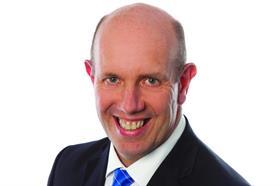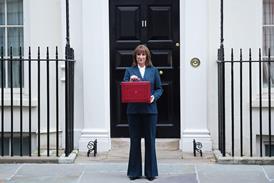The basis period reforms that are coming into effect during tax year 2023/24 are rightly receiving increased prominence in many solicitor meetings with their accountants and advisers. The reforms will affect unincorporated businesses, whether a sole trader practitioner or a partnership, be that a traditional partnership or LLP. It should be said that the basis period reform will not affect businesses with accounting year-ends of 5 April or 31 March, or those that are trading as a limited company.

The major practical issue to consider for taxpayers, or rather those responsible for practice finances, will be the impact on cashflow. In the transition year, HM Revenue & Customs will tax more than 12 months’ profit unless the accounting year-end is 31 March. This will be due on 31 January 2025. For example, those with a 30 April year-end will pay tax on 23 months of profit in the transition year.
This may result in significant increases in an individual’s tax liability, subject to the availability of overlap relief. This can be mitigated by the ability to spread the transitional profit (profit between the end of the accountancy period to 5 April 2024) over a maximum of five years. However, careful cashflow planning will be needed to ensure these additional tax liabilities can be funded.
Under the current rules, individuals are taxed on profits arising in the accounting period ending in the relevant tax year; for example profits in the year ended 30 June 2022 will be taxed in 2022/23 tax year.
From 2024/25, profits will be taxed on a tax-year basis. For example, for the year ended 30 June 2024, three months of the profits from the 30 June 2024 accounts and nine months of the profits from 30 June 2025 accounts will be taxable in the 2024/25 tax year.
HMRC accepts that this may require estimates for the period in which accounts have not yet been completed. However, it has advised that taxpayers will need to go back and amend the earlier years on completion of the accounts and – beware – interest will be charged on any underpayment.
The transition period will be the 2023/24 tax year. Individuals will be taxed on the profit for the 12 months to the accounting period which ends during the tax year, plus the profits from the end of the previous accounting period to 5 April 2024.
As there will be more than 12 months of taxable profit, this is where individuals can relieve any overlap profit brought forward from the start of their trade.
The profit for the 12 months to the accounting period ending in the tax year is referred to as the standard profit. The profit from the end of the accounting period to 5 April 2024 is the transitional profit.
The overlap relief is deducted from the profit realised in the transitional period. This net profit or loss is then aggregated with the profit or loss realised in the standard period.
Where the transitional profits, minus the overlap relief brought forward, results in a taxable profit the individual can spread the profits over five years.
The spreading applies automatically, however there is an option to accelerate the recognition of the spread profit. The election needs to be made within 12 months of the self-assessment filing deadline for the tax year in which the individual wants to recognise additional profits.
This may be preferred where the future tax rates are uncertain, and the individual would rather have more profits taxed now rather than in future when (under a new government perhaps) income tax rates may rise. It may also be beneficial where there has been a less profitable year of trading and the individual is taxed at a lower rate of income tax in one of the following five years. Remember, it is only the profits in the transitional period that can be spread, not the total profits.
There are various tax implications to consider in the transitional period. Where the transitional profit takes a taxpayer over the £100,000 threshold, the taxpayer’s personal allowance will be restricted by £1 for every £2 over the threshold. Undoubtedly there will be a focus on tax planning at or around this and other thresholds.
HMRC has confirmed that the transitional profit will not bring taxpayers into the high-income child benefit charge, which applies when an individual’s income exceeds £50,000.
As the transitional profit is not included in the adjusted net income, it does not affect the thresholds for pension contributions. For example, where the annual allowance is tapered for income exceeding £240k, the transitional profit is not taken into account when determining if these thresholds are exceeded.
Although the transition profit will not be included in adjusted net income, it is considered relevant earnings for pension purposes.
The key point is, do you have sufficient funds? Because in the next two years and going forward you will take a hit to cashflow. Firms and their partners need to ensure this is planned for – do not be too late adopting further good lock-up best practice to release funds; or line up borrowing early if the expected transition tax payments cannot be made from cashflow generated from trading.
Finally, while there is a growing consensus that firms which do not already have a 31 March or 5 April year-end should move to that at the end of tax year 2023/24, it is not mandatory. It might not suit your business, your partners or upcoming retirement plans, so is not essential. Firms should also consider, in a not unrelated point, the impact on their members/partnership agreement from any change of year-end that may affect retirement dates and related clauses.
Peter Noyce is a partner and legal specialist at accountancy firm Menzies LLP. He is also author of Brighter Thinking for Law Firms































No comments yet